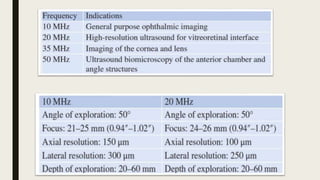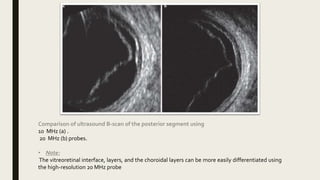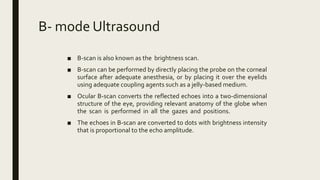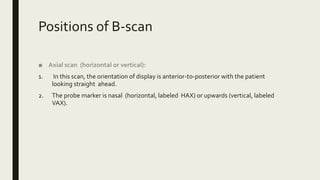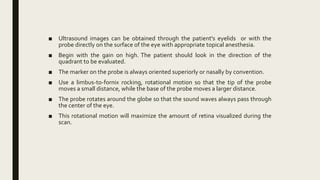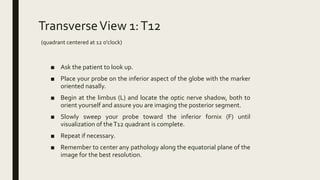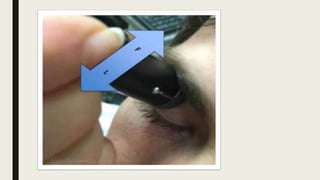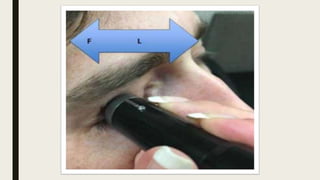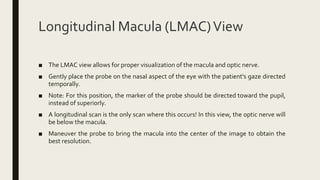This document provides an overview of B-scan ultrasonography for ophthalmic use. It discusses how ultrasound works using sound waves, different transducer probes and frequencies. Higher frequencies have better resolution but shallower penetration. B-scans produce 2D images of the eye by converting reflected echoes. Techniques include axial, transverse and longitudinal scans in different positions. Examples show pathology detection. Proper technique sweeps the probe rotationally from limbus to fornix to view the entire posterior segment in five maneuvers: four quadrants and one macula scan.




